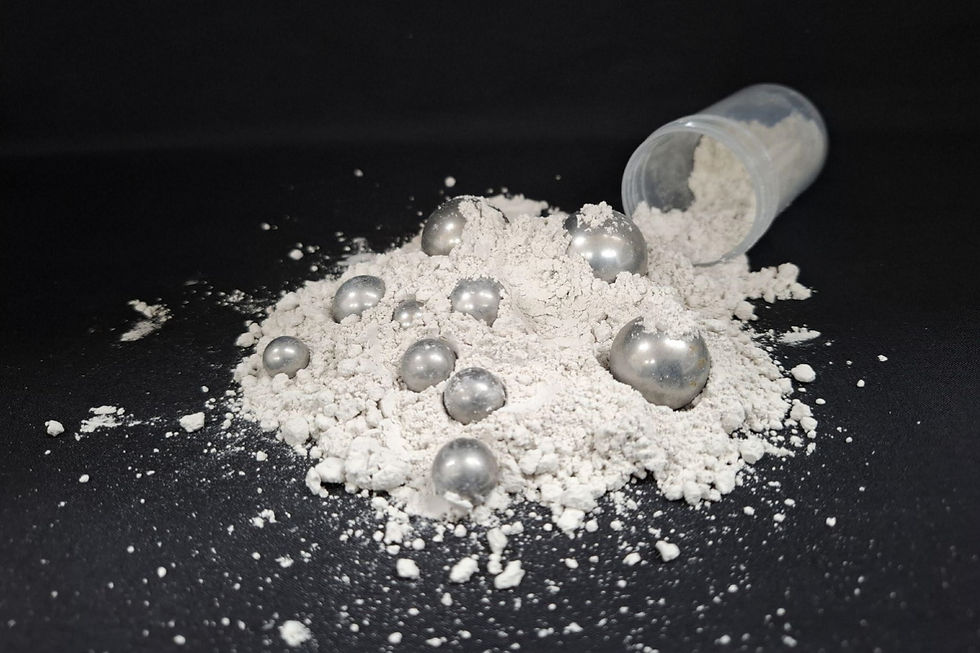ABx Group drilling widens Tasmanian rare earths footprint
- Doug Bright

- Aug 7, 2024
- 3 min read

ABx Group (ASX: ABX) says it has uncovered the potential for resource extension at its Deep Leads rare earths prospect in Tasmania after receiving the first 316 assays from its 37-hole maiden air-core (AC) drilling sortie into a previously untested part of the site.
The company’s assay suite not only revealed thicker rare earths intercepts than usual, but also a high 4.3 per cent proportion of the high-value dysprosium and terbium (DyTb) elements in the Deep Leads total rare earth oxides (TREO). Management says the high DyTb content surpasses the numbers reported by other comparable Australian projects and is even considered lofty by global standards.
The company also notes that its big thicknesses of clay-hosted ionic rare earths with such high DyTb:TREO ratios are atypical of comparable projects around world, which could translate into a significant market boost.
In May, ABx updated a combined rare earths mineral resource from its Deep Leads, Rubble Mound and Wind Break prospects, centred about 45km west of the city of Launceston, to 89 million tonnes at an average grade of 844 parts per million TREO, calculated from just 29 per cent of the total mineralised envelope defined to date. Within that resource, the company says that not only does that global resource contain its high DyTb:TREO ratio, but that some resource blocks run to better than 6 per cent.
In the current measured resource category alone, which contains 5.6 million tonnes at a grade of 998ppm TREO, the combined permanent magnet rare earths assemblage comprising neodymium, praseodymium (NdPr) and DyTb makes up an impressive 26 per cent. The high-value DyTb subset proportion of the TREO for the measured category is an attractive 4.6 per cent.
Drill results in the NW Block expand the resource outline for the Deep Leads high-grade rare earth zone and also enhance the areal extent from hole DL520. DL520 is one of the nearest existing drillholes and is also where rare earth extractions of over 50% were measured using low-acid (pH 4) conditions – confirmed in desorption tests by the Australian Nuclear Science and Technology Organisation (ANSTO) and in-house tests.
ABx Group Managing Director and CEO Mark Cooksey
Another important aspect to the project is that not only are the thicknesses of the mineralised zones often significant, in the range of 4m to 7m, but they are also at shallow depth below surface from 2m to 5m of soil and clay overburden.
Combined, these factors translate to simple free-dig pre-strip and mineability, straightforward overburden stockpiling for later rehabilitation of shallow mining pits to arable land using fertile top soil, simplified in-pit and in-ore mine path designs and higher ore tonnes per vertical metre.
ABx has undertaken rare earths extraction/desorption tests on material from the nearest drillhole to the recently drilled NW Block at Deep Leads. Repeated testwork by ANSTO and the company has found that rare earths extractions of more than 50 per cent can be achieved using extraction reagent at pH4 levels.
The company is proposing the production of a mixed rare earths carbonate that would be well-suited for sale to separation plants for conversion into mixed or separated rare earth oxides components.
Management says it has already held many discussions with potential customers, while investors have affirmed the particular strengths they see in the company’s rare earths deposits.
More results are still to come from ABx’s latest drilling north of the existing Deep Leads defined mineralised envelope and it will be interesting to see just how far towards or into the NW Block the company can extend a potential future resource – and perhaps build further on it in future drilling programs.
Is your ASX-listed company doing something interesting? Contact: office@bullsnbears.com.au


